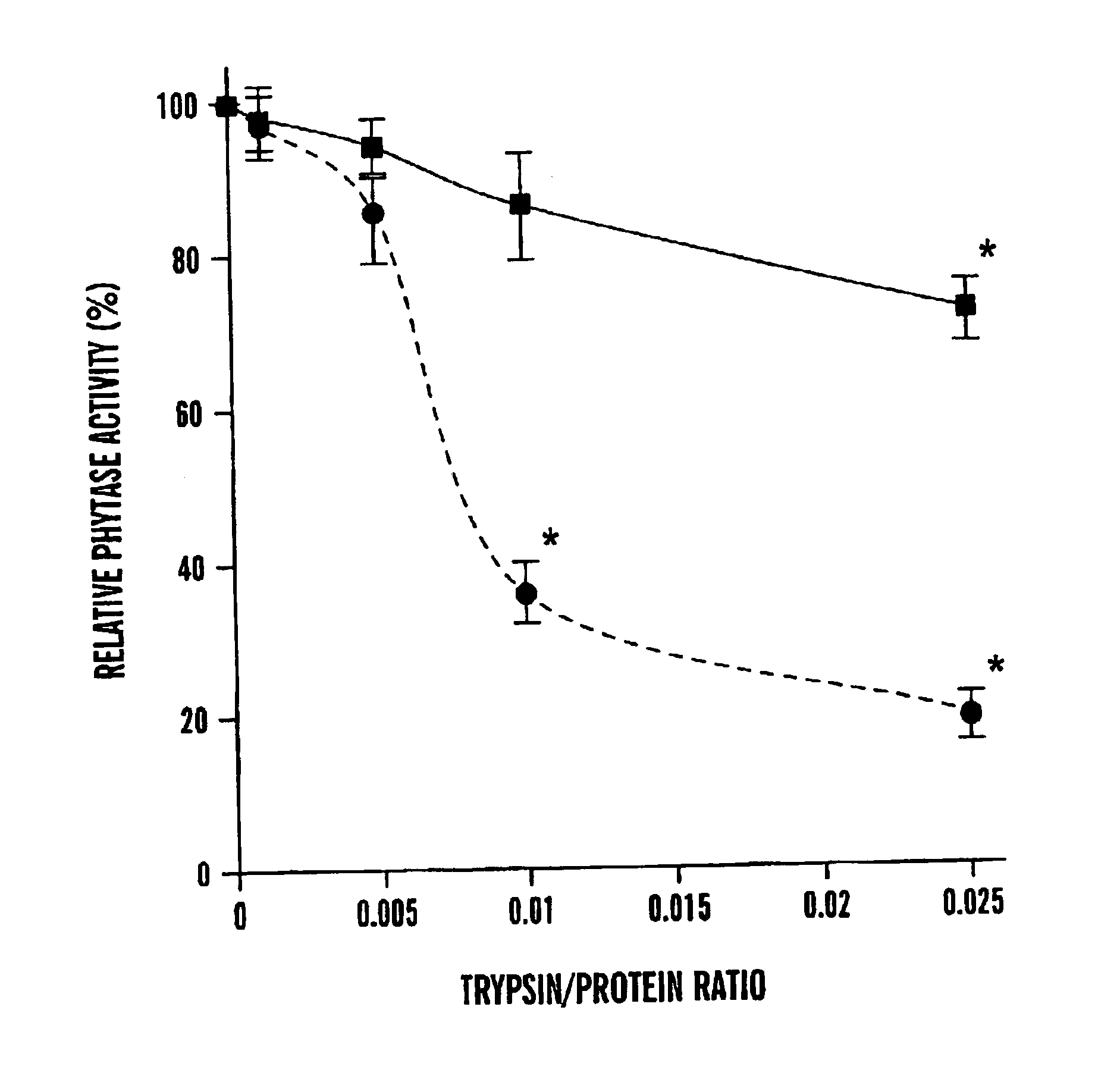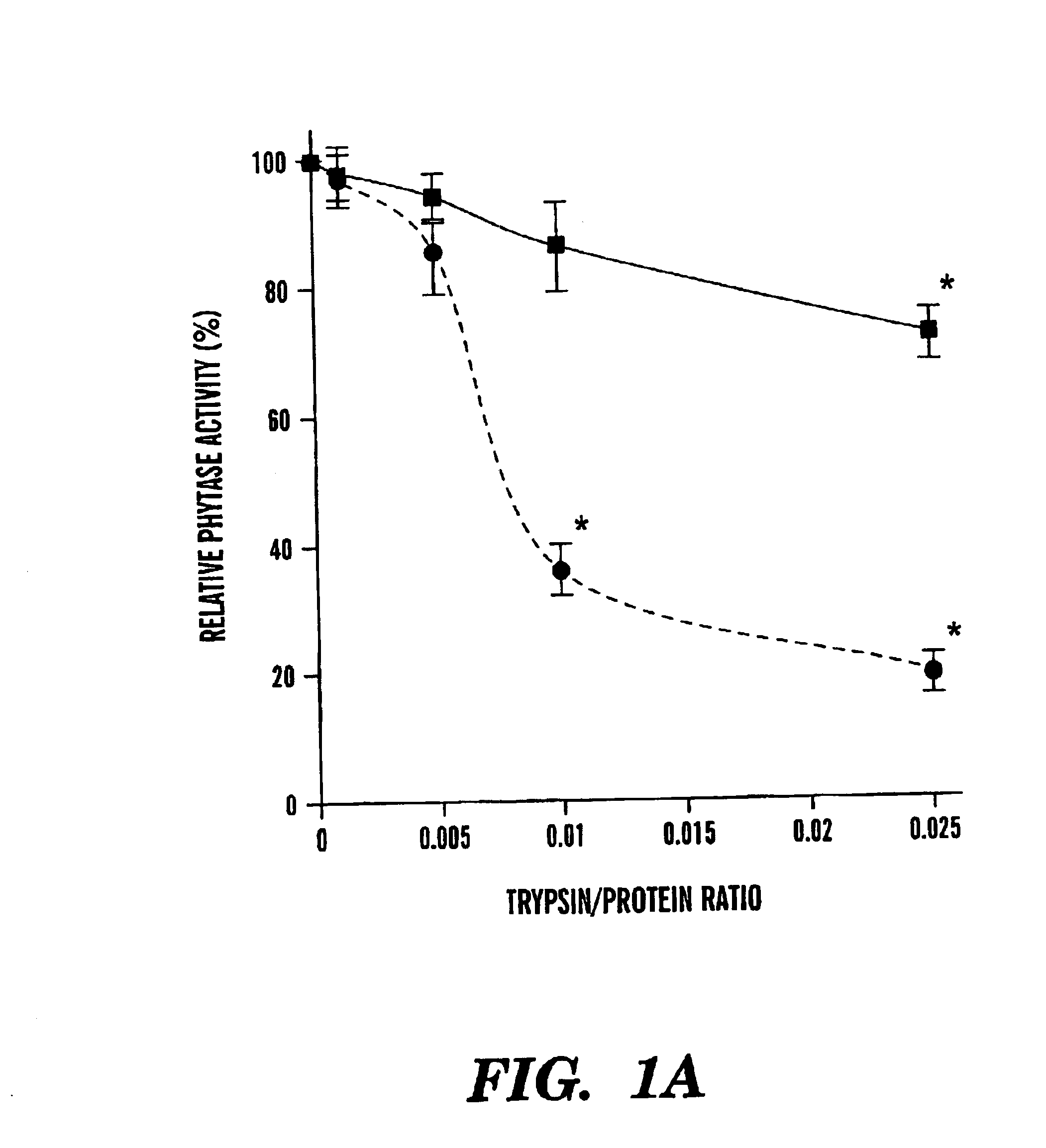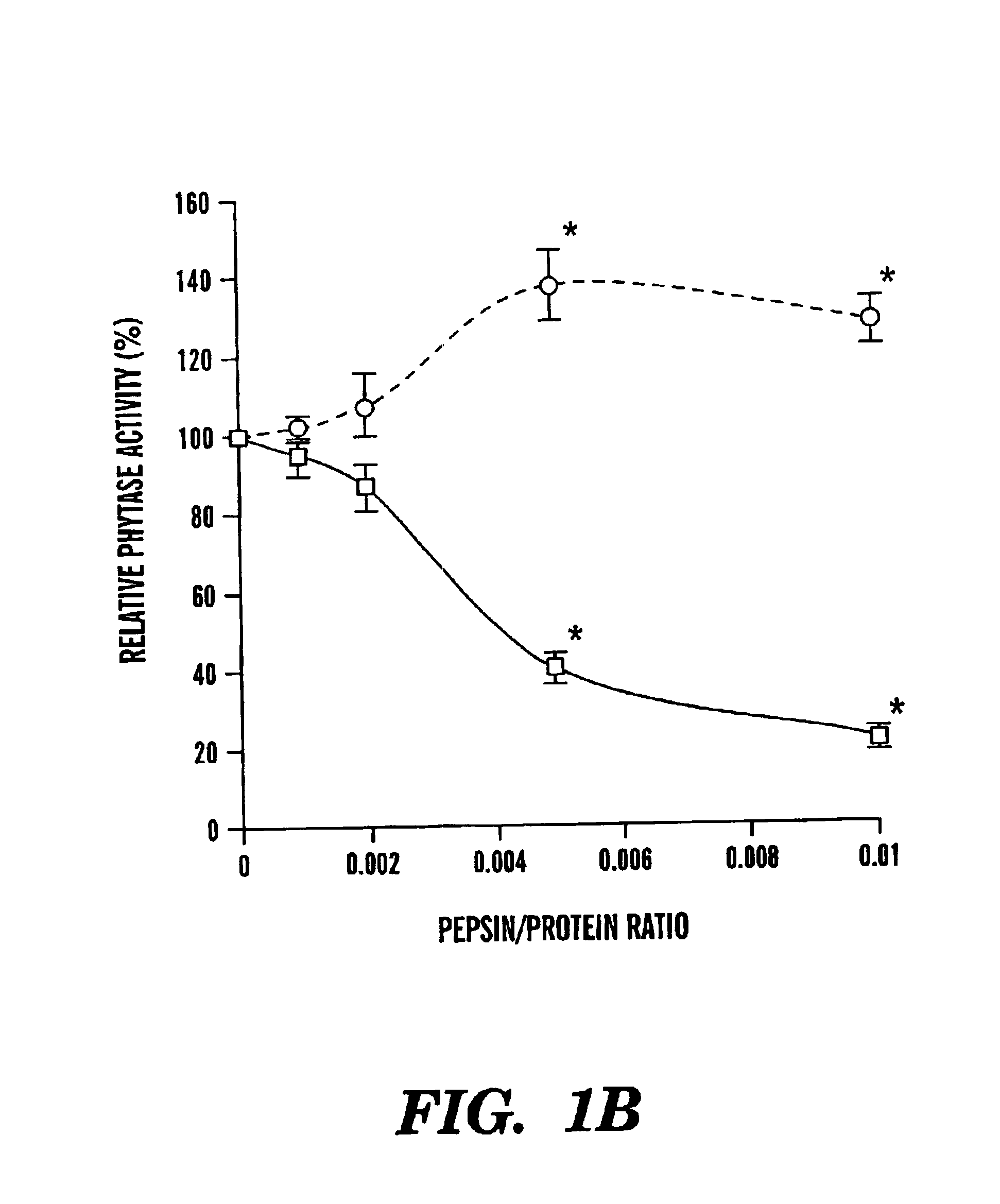Phosphatases with improved phytase activity
- Summary
- Abstract
- Description
- Claims
- Application Information
AI Technical Summary
Benefits of technology
Problems solved by technology
Method used
Image
Examples
example 1
Materials and Methods for Examples 2-6
[0052]Expression of r-AppA. The appA gene (Genebank accession number M58708) was obtained from E. coli BL21 strain transformed by an expression vector pAPPA1 (20). A 1.35 kb DNA fragment containing the coding region of appA was amplified by PCR following the manufacturer instructions (Perkin Elmer). Primers were derived from 5′ and 3′ regions of the nucleotide sequence (18), and include: E2 [forward: 242-252]: 5′GGAATTCCAGAGTGAGCCGGA3′ (SEQ. ID. No. 2) and K2 [reverse: 1468-1490]: 5′GGGGTACCTTACAAACTGCACG3′ (SEQ. ID. No. 3). These two primers were synthesized by the Cornell University Oligonucleotide Synthesis Facility (Ithaca, N.Y.). The amplified product was sliced from a 1% agarose gel, and eluted with GENECLEAN II kit (Bio101). The purified fragment was first cloned into pGEM T-easy vector (Promega), and then inserted into the yeast expression vector pPIcZαA (Invitrogen) at EcoRI site. E. coli strain TOP10F′ (Invitrogen) was used as an initi...
example 2
Preparation of r-AppA and r-PhyA
[0056]Over 30 colonies of X33 transformed with the appA gene expressed extracellular phytase activity that hydrolyzes sodium phytate. Colony 26 had the highest activity (88 U / mL) and was chosen for further studies. After the r-PhyA and the r-AppA samples were eluted from the DEAE-Sepharose column, 45 fractions of 4 mL each were collected for both enzymes to assay for phytase activity. The fractions used for proteolysis had a specific phytase activity of 9.6 and 8.1 U / mg of protein for the r-PhyA and r-AppA, respectively.
example 3
Effects of Trypsin Digestion on the Phytase Activities of Both Enzymes
[0057]After 2 hour trypsin digestion, there were significant differences in the residual phytase activities between the r-PhyA and the r-AppA (FIG. 1A). Although both enzymes retained more than 85% of their original activities at the trypsin / phytase ratios of 0.001 and 0.005, r-AppA lost 64 and 74% of its original activity at the ratio of 0.01 and 0.025, respectively. Meanwhile, r-PhyA lost only 14 and 23% of its original activity, respectively. Because of the apparent difference in sensitivities of these two enzymes to trypsin digestion at the ratio of 0.01, a time course study was conducted with this ratio. Up to 2 hour trypsin digestion, r-PhyA still retained 90% of its original activity (FIG. 2). In contrast, r-AppA lost 64, 77, 87, and 95% of its original activity after 1, 5, 30, and 120 minute digestion, respectively.
PUM
 Login to View More
Login to View More Abstract
Description
Claims
Application Information
 Login to View More
Login to View More - R&D
- Intellectual Property
- Life Sciences
- Materials
- Tech Scout
- Unparalleled Data Quality
- Higher Quality Content
- 60% Fewer Hallucinations
Browse by: Latest US Patents, China's latest patents, Technical Efficacy Thesaurus, Application Domain, Technology Topic, Popular Technical Reports.
© 2025 PatSnap. All rights reserved.Legal|Privacy policy|Modern Slavery Act Transparency Statement|Sitemap|About US| Contact US: help@patsnap.com



